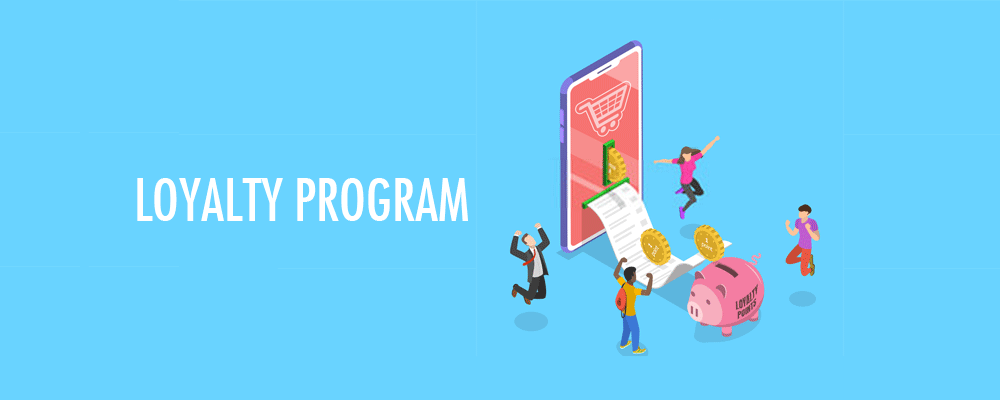
Expected to surpass US$ 3,363.4 million in 2023, the India loyalty program market is poised for significant growth, with projections indicating a substantial increase to US$ 14,502.6 million by 2033. Anticipated to advance at a Compound Annual Growth Rate (CAGR) of approximately 15.7% from 2023 to 2033, this growth trajectory underscores the increasing importance of loyalty programs in the Indian market. Factors such as rising consumer spending, evolving retail landscapes, and the shift towards digitalization contribute to the market’s robust expansion. As businesses focus on customer retention and engagement, the loyalty program market presents lucrative opportunities for growth and innovation.
Several retailers and businesses use loyalty programmes as one of their marketing methods to draw in and keep their channel partners and customers. They provide customers with additional benefits and encourage them to spend more money through these initiatives.
Rewards, points, discounts, and other unique incentives are provided by loyalty programmes in an effort to boost sales and foster client loyalty. This aids businesses in building a solid base of loyal customers.
Request a Sample Report and Explore New Growth Opportunities Now: https://www.futuremarketinsights.com/reports/sample/rep-gb-14566
The market for loyalty programmes is a subset of the market for loyalty management, which also includes software and services (professional services and managed services). These variables led to an 18% growth rate in the Indian loyalty programme market over the course of the historical period (2016-2021).
Business Growth Drivers:
- Increasing Competition: With the rise of e-commerce and brick-and-mortar retail stores, businesses in India are facing intense competition. Loyalty programs offer a way for companies to differentiate themselves and retain customers.
- Changing Consumer Behavior: Indian consumers are becoming increasingly discerning and value-conscious. Loyalty programs provide incentives for repeat purchases and help in fostering brand loyalty among customers.
- Technological Advancements: The advent of digital technologies has revolutionized loyalty programs. Mobile apps, data analytics, and personalized offers have made loyalty programs more effective in engaging customers.
- Data Analytics: Companies can gather valuable customer data through loyalty programs, which can be analyzed to gain insights into consumer behavior, preferences, and purchasing patterns. This data-driven approach enables businesses to tailor their marketing strategies and offerings accordingly.
- Customer Retention: Acquiring new customers can be more costly than retaining existing ones. Loyalty programs incentivize repeat purchases, leading to higher customer retention rates and long-term profitability.
Industry Restraints:
- High Cost of Implementation: Implementing and maintaining a loyalty program can be expensive, especially for small and medium-sized businesses. Costs include technology infrastructure, rewards, marketing, and staff training.
- Lack of Differentiation: In a crowded market, many loyalty programs offer similar rewards and benefits, making it challenging for companies to stand out. This can lead to low engagement and participation rates among customers.
- Data Privacy Concerns: Collecting and storing customer data raises privacy concerns, especially in light of stringent data protection regulations such as GDPR and India’s Personal Data Protection Bill. Companies need to ensure compliance with these regulations to avoid legal repercussions.
- Fraud and Abuse: Loyalty programs are susceptible to fraud and abuse, such as account hacking, point theft, and counterfeit redemptions. Companies need to implement robust security measures to safeguard against such threats.
- Saturation: The market may become saturated with loyalty programs, leading to diminishing returns for businesses. Customers may also experience fatigue from managing multiple loyalty memberships, leading to reduced engagement.
Request the Full Report Methodology Now:
https://www.futuremarketinsights.com/request-report-methodology/rep-gb-14566
How will Adoption of AI to Offer Personalized Rewards to Channel Partners Benefit Market?
Industry experts today largely believe that many of the industry sectors are steadily marching towards personalization. In the past few years, adoption of AI (artificial intelligence) to create a more personalized experience is gaining popularity.
Creating user profiles has helped the players gain information to personalize incentives that are likely to be considered more effective than generalised incentives. Another way of using AI (artificial intelligence) is to incentivize the channel partners by logging in their purchase records. This feature can help the organization to completely analyse the purchase behaviour of channel partners in detail at different levels or tiers.
Category-wise Insights
Which Program Type Will Dominate the India Loyalty Program Market?
“Combination of Point-Based and Pre-Decided Loyalty Program to be the Most Preferred”
In terms of program type, combination of point-based and pre-decided loyalty programs account for a notable share of 64.8% in India loyalty program market. However, point-based loyalty programs held a significant share in 2020 as points are easy to earn and easy to redeem. Channels can redeem points for credit toward their next purchase, discounted services, or giveaways.
Which Consumer Orientation Will Remain Highly Sought-After in India Loyalty Program Market?
“Need for Sales Incentives to Boost the India Loyalty Program Market”
In terms of consumer orientation, sales incentives segment is expected to dominate the market owing to increase in profits, improves sales success and allows sustainable growth. A well-designed and well-executed loyalty program helps in retaining existing customers, attract new customers, reduce turnover and drive profits. However, employee rewards and channel incentives will account for significant market share of 17.7%, and 10.2%, respectively.
Which is the Leading End User in India Loyalty Program Market?
In terms of end-user, large enterprises segment will account for a notable share in the India loyalty program market. However, a significant share of B2B small and medium enterprises segment witness steady growth over the forecast period, estimates Future Market Insights (FMI).
Based on vertical, others segment including aviation, hospitality, BFSI, healthcare, education and IT & telecom is expected to hold lion’s share in the market.
Competitive Landscape
Prominent players in the India loyalty program industry are adopting various strategies to survive high level competition. Meanwhile, other players in the market are adopting strategies such as mergers and product launches to gain competitive edge in the industry.
Key Players:
- One Loyalty
- ChannelPlay Ltd.
- REWARDPORT
- Evolve Brands
- Slingloft
- Others
India Loyalty Program Market by Category
By Program Type:
- Point-Based Loyalty Program
- Pre-Decided Loyalty Programs
- Combination of Point-Based and Pre Decided Loyalty Programs
By End User:
- Small& Medium Enterprises
- Large Enterprises
By Consumer Orientation:
- Employee Rewards
- Sales Incentives
- Channel Incentives
By Vertical:
- Automobiles
- Cement
- Electronics & Electricals
- Laptops
- Luxury Brands
- Mobile Phones
- Paints
- Tyres
- Watches
- Others
Author
Sneha Varghese (Senior Consultant, Consumer Products & Goods) has 6+ years of experience in the market research and consulting industry. She has worked on 200+ research assignments pertaining to Consumer Retail Goods.
Her work is primarily focused on facilitating strategic decisions, planning and managing cross-functional business operations, technology projects, and driving successful implementations. She has helped create insightful, relevant analysis of Food & Beverage market reports and studies that include consumer market, retail, and manufacturer research perspective. She has also been involved in several bulletins in food magazines and journals.
About Future Market Insights (FMI)
Future Market Insights, Inc. (ESOMAR certified, recipient of the Stevie Award, and a member of the Greater New York Chamber of Commerce) offers profound insights into the driving factors that are boosting demand in the market. FMI stands as the leading global provider of market intelligence, advisory services, consulting, and events for the Packaging, Food and Beverage, Consumer, Technology, Healthcare, Industrial, and Chemicals markets. With a vast team of ~400 analysts worldwide, FMI provides global, regional, and local expertise on diverse domains and industry trends across more than 110 countries.
Contact Us:
Future Market Insights Inc.
Christiana Corporate, 200 Continental Drive,
Suite 401, Newark, Delaware – 19713, USA
T: +1-845-579-5705
For Sales Enquiries: sales@futuremarketinsights.com
Website: https://www.futuremarketinsights.com
LinkedIn| Twitter| Blogs | YouTube


